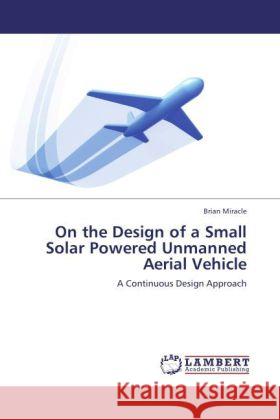On the Design of a Small Solar Powered Unmanned Aerial Vehicle » książka
On the Design of a Small Solar Powered Unmanned Aerial Vehicle
ISBN-13: 9783848436583 / Angielski / Miękka / 68 str.
Unmanned aerial vehicles are seeing increasing use in a variety of applications including warfare, imaging, communication, search and rescue, meteorology, agriculture, and more. For most applications, flight endurance on the order of days, weeks, or even years is desirable. Photovoltaic cells represent an emerging and viable method of powering unmanned aerial vehicles on such long endurance flights. This study investigates the design optimization of a small solar powered unmanned aerial vehicle. The aircraft is intended to weigh less than twenty pounds and to fly for 24 hours at low altitude over Sacramento, California during the summer months of May through September. Photovoltaic technology and the characterization of thin-film photovoltaic cells are reviewed. The majority of the document is a description of the methods used to implement a continuous design approach in which the battery pack power, photovoltaic efficiency, and aircraft weight were determined for a given aspect ratio and wing loading.











